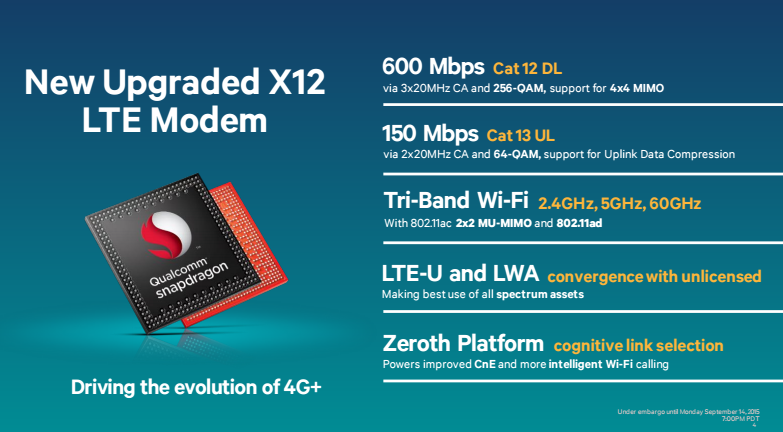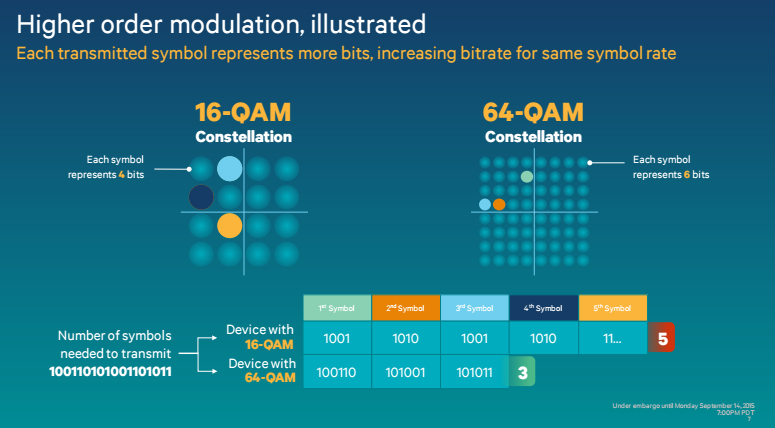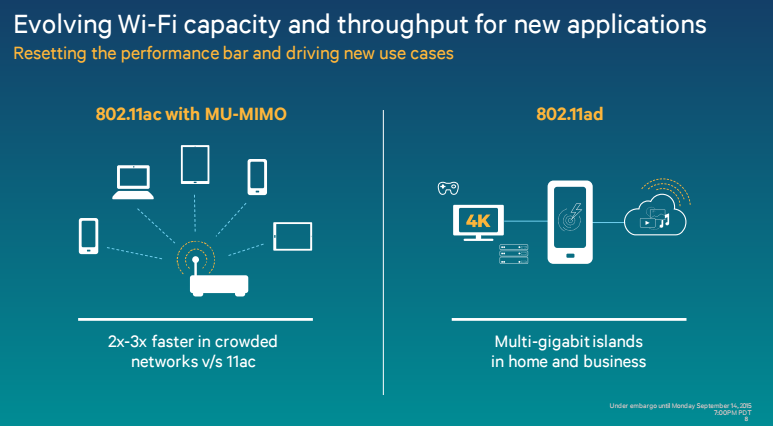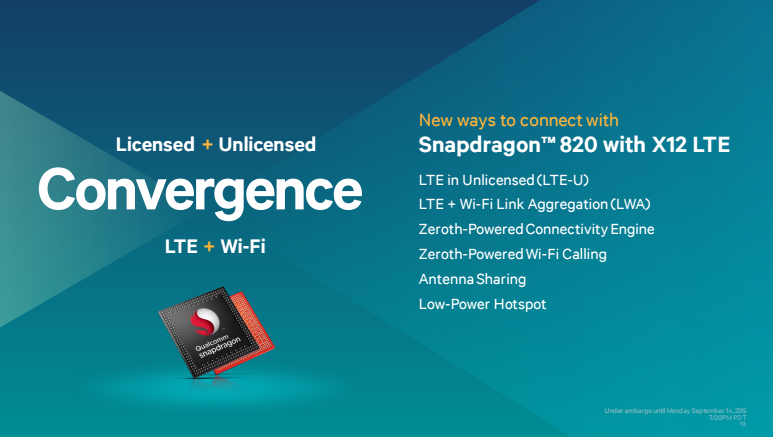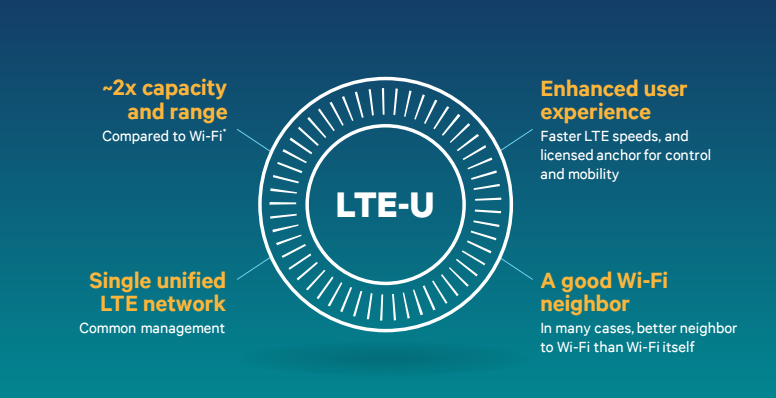Snapdragon 820 Will Support 600 Mbps Cat 12 LTE, 802.11ad Wi-Fi, LTE-U
Qualcomm announced that its upcoming flagship SoC, the Snapdragon 820, will be the first chip to support 600 Mbps downlink Cat 12 LTE, 150 Mbps uplink Cat 13 LTE, and the brand new LTE-U technology.
LTE Cat 12/13
The Snapdragon 820 looks to be an almost complete overhaul. It will get brand-new CPU cores, an Adreno 500-series GPU, the Hexagon DSP, heterogeneous computing supporting, the Sigma dual-ISPs for much improved computational photography, support for ultrasonic fingerprint sensors, a cognitive computation platform, and last but not least, a range of new wireless technologies as well.
According to Qualcomm, the Snapdragon 820 will be the first to feature the most powerful and readily available Cat 12/13 LTE technologies that bring download speeds of up to 600 Mbps and upload speeds of up to 150 Mbps.
The new X12 modem can achieve these speeds by bonding together three LTE connections for downlink using LTE Advanced carrier aggregation technology, while for uplink it can use two simultaneous LET connections. The modem also uses higher-order modulation (256-QAM) on both the downlink and uplink to achieve those speeds when carrier aggregation isn't enough.
802.11ac MU-MIMO And 802.11ad
The Snapdragon 820 will support 802.11ac 2x2 MU-MIMO Wi-Fi, which is especially useful in crowded places from airports to offices, or even at home if you're using multiple devices at the same time. The MU-MIMO technology is what helps serve multiple devices at the same time with fewer connection interruptions.
The new chip will also support 802.11ad Wi-Fi, previously known as "WiGig" before it was acquired by the Wi-Fi alliance. The new technology works on the 60 GHz spectrum, which means much shorter ranges, but it can also deliver much higher transfer rates. Qualcomm's modem will support a bandwidth of up to 4.6 Gbps. This should be enough to handle multiple UHD video streams at the same time, lossless screen mirroring to the TV, or quickly backing up your camera roll to your network drive.
The LTE modem will have to use two different chips, one for 802.11ac (QCA6174) and one for 802.11ad (QCA9500), which could increase the cost of Qualcomm's LTE modem and chip bundle, but it's likely all OEMs will want it anyway.
Get Tom's Hardware's best news and in-depth reviews, straight to your inbox.
Smart Wi-Fi Calling
The new modem in the Snapdragon 820 can also automatically identify when it's best to use an LTE or a Wi-Fi connection, depending on signal quality, end-to-end speed, and Internet reachability. All of this happens in the background without causing your call to drop.
The chip also supports HD voice over LTE as well as native HD video. Although just like with regular calls, when you choose to use the network directly instead of an app for the call, you're trusting the content of that communication with the carrier rather than the app provider, which often uses weaker encryption or has more relaxed data access policies.
LTE-U
LTE-U stands for "LTE unlicensed," because it's LTE that works on the unlicensed 5 GHz spectrum, now occupied by Wi-Fi routers. This has also caused much controversy, because eventually carriers could crowd out Wi-Fi routers with LTE-U "routers" or cells.
Right now, it's mainly other companies, including cable companies, that offer Wi-Fi services, and the carriers focus more on their LTE services. It would be in their interest to get more people to use LTE-based technologies rather than Wi-Fi technologies. The Wi-Fi Alliance has also expressed its worries to the FCC that LTE-U could interfere with Wi-Fi and suggested that the deployment of LTE-U should be delayed until proper spectrum sharing mechanisms are put in place.
Qualcomm said that its LTE-U modem will "fairly" share the space with Wi-Fi routers, but ultimately it remains to be seen how true that is.
The company also said that when in range of an LTE-U cell, the device will use one connection in the licensed LTE spectrum and one in the unlicensed LTE-U spectrum. Then it will bond the two connections to act as a faster connection.
The Qualcomm Snapdragon 820, along with all of these wireless technologies and many other new features, is expected to arrive in the first half of 2016.
Follow us @tomshardware, on Facebook and on Google+.
Lucian Armasu is a Contributing Writer for Tom's Hardware US. He covers software news and the issues surrounding privacy and security.
-
somebodyspecial Some of the tech is pretty cool to have in a phone/tablet (AC/AD), but modem speeds with no networks to use them mean pretty much nothing (likely for years to come). By the time I need these speeds from cat12/13 I'll be on a new phone, not to mention all it does is speed me to a 2GB cap even faster than before, which already could not do a 720P movie let alone a 1080P one...LOL. This would be more important if uncapped, which is not likely to happen for years if not longer (unless you just like HUGE bills and can afford more data).Reply -
amk-aka-Phantom Now, THIS is "tri-band". somebodyspecial - keep in mind that 802.11ad is not meant to replace 802.11ac, it is completely unsuitable to be used for WLAN, its primary purpose is to facilitate wireless docking stations. This is absolutely great to have in a smartphone with a powerful processor - I'd love to have a docking station with USB, HDMI and other common ports that my phone could just connect to once I'm home.Reply
The only problem I envision is that Google and smartphone vendors won't be really happy with that sort of a setup - they want to sell you more crap to do the same things in different scenarios, replacing all of it with one powerful device and a docking station is their nightmare. Custom ROMs to the rescue as usual, I guess. -
fil333 What is the point in having a 60GHz WiFi antenna in a phone? Especially with data caps being as strenuous as ever. I'd rather see more effort going into energy saving than yet more features to absolutely rape your battery life.Reply
